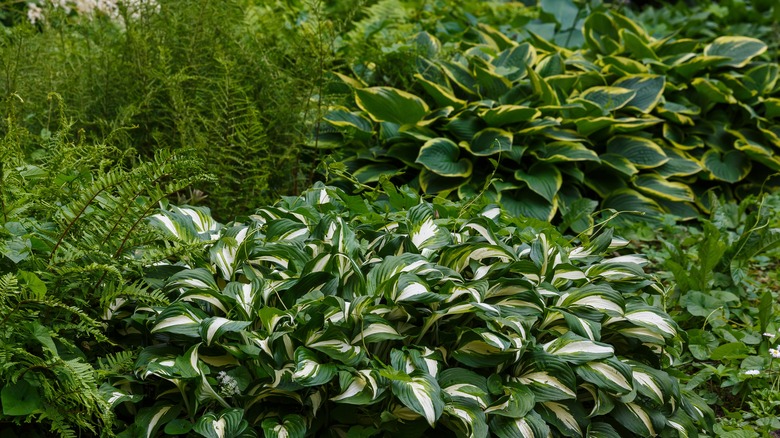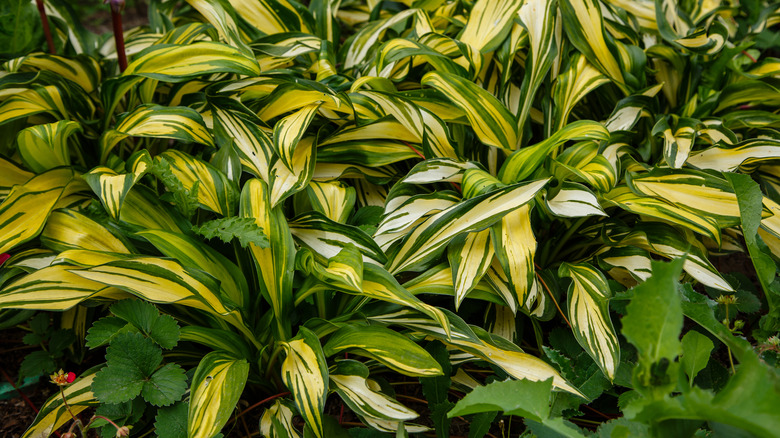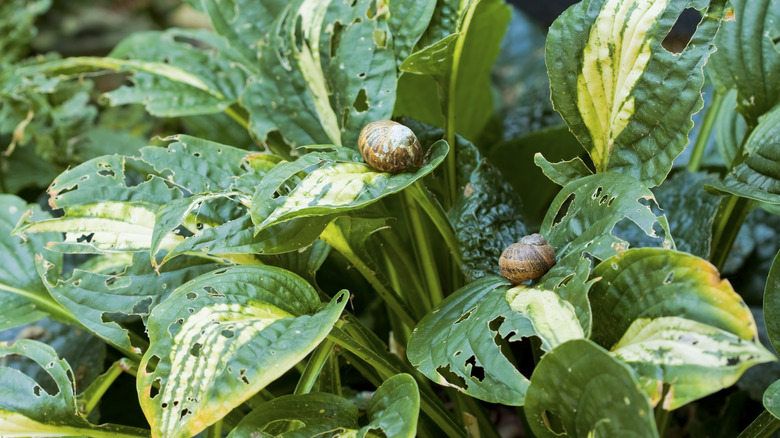Our Hosta Expert Tells Us Which Variegated Varieties Will Light Up Your Shady Garden
Finding vibrant, lively plants that thrive in shade can be a struggle. Hostas are a popular choice because they come in so many varieties (over 3,000), including many that are variegated. How, though, is one to choose between so many options? We asked Chuck Pavlich, director of new product development, product licensing, Royalty Division at Terra Nova Nurseries Inc., exactly that. Before you find out which variegated hostas varieties our expert recommends, you may find yourself wondering what exactly variegated means. Despite the somewhat complex term, its definition is quite simple. A variegated plant is just one with multi-colored leaves.
Pavlich admits that he has a special love for variegated plants, and hostas are certainly no exception. "Some of my favorite variegated hostas are, in no particular order: Sagae, Lakeside Paisley Print, Rainbow's End, First Frost, Montana Aureomarginata, and Blue Ivory," he said in an exclusive interview with House Digest. The plant expert assures us that they are also hardy and reliable perennials in low-light areas. "All of these do well in a shaded garden," he asserted. If you've been planning your next shade garden, this is the expert advice for you.
Expert-recommended variegated hosta varieties
While hostas aren't necessarily the showiest plants on earth, the variegated varieties recommended by Chuck Pavlick provide an array of different shades and patterns that provide the contrast and vibrancy needed to stand out within any flourishing shade garden. First Frost hostas, for instance, offer a striking deep blue-green centered leaf with gold variegation that fades to white over the growing season. Lakeside paisley print hostas, on the other hand, produce unique heart-shaped leaves with consistent cream variegation through the center and vibrant green around the edges. Both produce lovely lavender flowers.
Pavlich was quick to assure us that in addition to thriving in a shady garden, these varieties are hardy perennials that won't let you down from season to season. "They hold their variegation well and are vigorous," he explained exclusively to House Digest. "Each of my favorite varieties are quite stable and easily return year after year. Most are medium to large and become more majestic with age."
What you need to know about growing hostas
With so many hosta varieties to choose from, it's important to understand the characteristics of the ones you're considering before you actually plant them. "The only caveat for hostas is right hosta, right place," Chuck Pavlich exclusively advised House Digest readers. "Hostas range in size from only a few inches to 5 or 6 feet! Choose the right size plant for your garden." Pavlich went on to explain that hostas — while stars of the shade garden — do present a couple of potential gardening challenges, starting with their need for heavy feeding and watering.
"Hostas do not tolerate dryness well," he spelled out. "They love summertime moisture and do best in a slightly heavier soil that is water retentive," he went on, adding that the plants can also be "a bit piggy with feed." Other than their love for food and water, Pavlich reports that hostas can face a significant threat from pests. In fact, allowing access to various pests makes up a large portion of the 13 most common mistakes that are sure to kill your hostas. "Slugs and snails are two of the biggest pests for hostas," he warned. "The biggest has to be deer! Deer are persistent and more perennial than hostas!" If you aren't scared of pests and tend to remember to water your plants often, give variegated hostas a try in your next shade garden (or check out these 10 hostas that are tolerant to the sun).


